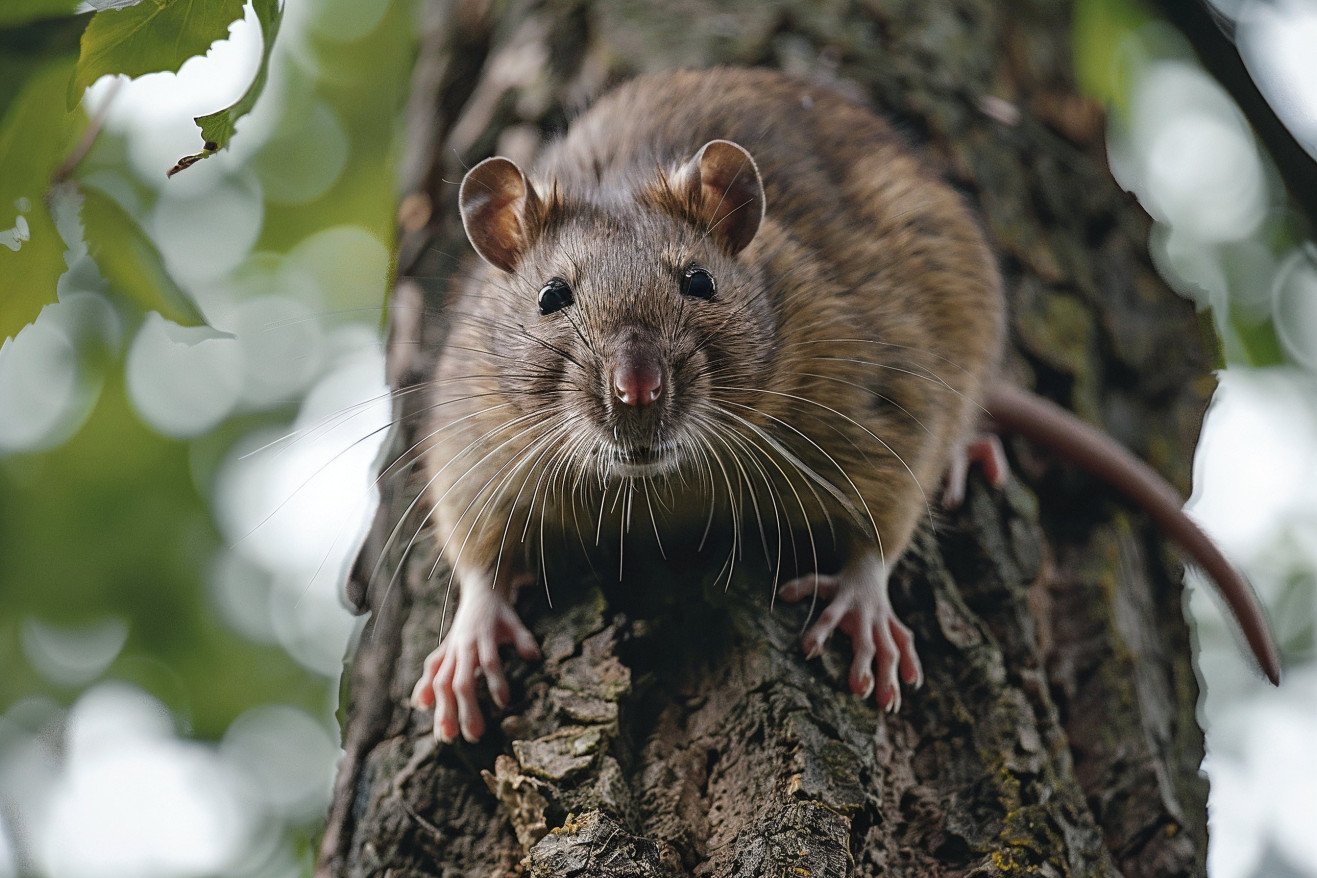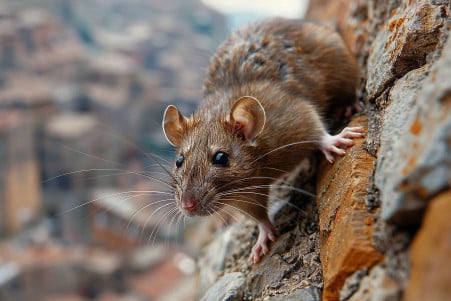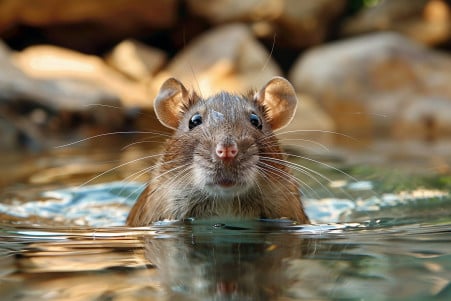Do Rats Climb Trees? A Look at Their Acrobatic and Arboreal Talents
1 June 2024 • Updated 31 May 2024

Thanks to their sharp claws and nimble bodies, rats are able to climb trees despite their small size. But how good are they at scaling tall trees and their branches? While rats are good climbers in general, their climbing talents are more limited when it comes to trees. Most rat species can climb small trees and low branches with ease thanks to their claws, but very few can climb large trees with thick trunks.
To explore these acrobatic rats' talents further, we will look at scientific research in the fields of ecology, zoology, and animal behavior. This work has shed light on the physical abilities, environmental adaptations, and climbing behaviors of different rat species. By reviewing these studies, you will learn about the factors that help and hinder a rat's ability to climb different types of trees and the evolutionary benefits of this ability.
Do rats climb trees?
Arboreal Rat Species: The Best Climbers and Tree Dwellers
One of the best climbers, the roof rat (Rattus rattus), is known for its agility and preference for high places, such as trees and attics, which has led to it being described as arboreal by nature. Its long tail helps with balance when climbing and leaping, allowing it to move deftly through the branches and nest in the foliage. In addition to the roof rat, other tree-dwelling species, including the Gambian pouched rat, Polynesian rat, and Alexandrine rat, have used their climbing skills to live in trees and avoid predators.
Palm trees, with their rough bark and complex branches, are a popular place for many of these arboreal rat species to nest. These rats have used their climbing skills to specialize in living in the treetops, showing how an animal's physical characteristics can determine its environment and lifestyle.
Physical Characteristics That Enable Climbing: Claws, Paws, and Tails
Rats' sharp claws enable them to grip and climb a wide range of surfaces, including trees. According to RatBlockers, rats' innate ability to climb up through various surfaces is due to their claws. Their padded paws also have a high friction coefficient that helps them hold on while climbing. Rats' long, flexible tails are essential for balance and support when climbing vertically, as RatControl.com points out.
Rat species' climbing ability is determined by their physical characteristics and body size. For instance, The Pest Informer explains that roof rats and Norway rats are better climbers than other rodents. This information about rats' physical characteristics can help us understand why some rats are better climbers than others and how they can climb so many different surfaces.
Climbing Techniques and Behaviors: Climbing Trees
In terms of differences in climbing ability between rat species, studies have found that ship rats have faster climbing speeds, more confidence in climbing, and more accuracy in jumping than Norway rats. A study in the New Zealand Journal of Zoology showed that ship rats climbed stands, ran across ropes, and jumped between platforms more quickly and frequently than the heavier Norway rats.
Rats are also able to learn quickly and modify their climbing techniques to overcome challenges and reach different surfaces. According to Mammal's Locomotion, some rats use techniques like hanging below branches and using their feet to grip to help them maintain stability as they climb trees. Understanding these specialized climbing techniques and behaviors can help researchers and pest control professionals develop effective strategies to prevent and control rats from using trees to enter homes.
Risks and Dangers: Stopping Rats From Entering Homes via Trees
Roof rats are a prime example of a pest that can enter homes via trees, and they can cause a lot of damage and danger. As noted by PURCOR, roof rats are excellent climbers and can scale buildings, utility lines, and trees to get into homes. Once they're inside, they can chew through drywall, wood, and even aluminum siding, leaving holes that are bigger than a quarter.
In addition to the damage they cause, roof rats can also be dangerous to human health. Terminix explains that rats can spread diseases like hantavirus through their urine and droppings, which can become airborne as they break down. Plus, their chewing can damage pipes, wires, and insulation, which can lead to fire hazards.
To keep roof rats from entering homes via trees, Good Guys Tree Service recommends that homeowners make sure that shrubs, trees, and other landscaping are trimmed away from the home. Making sure there's enough structural clearance between trees and the home can be an effective way to keep these agile pests at bay.
Conclusion: What Makes Rats Such Good Climbers?
Rats have sharp claws that help them grip and climb a variety of surfaces, including trees. According to the researchers at PMC, rats are adept climbers and use this behaviour to escape from predators and to forage. Their padded paws also provide high friction, which helps them maintain a secure grip while climbing.
Rats' long, flexible tails are essential for balancing and supporting their weight during vertical climbs. As explained by Lafeber Co., a rat's tail provides them extra time to make subtle, needed muscle adjustments as they walk or climb. The length and lack of hair on the tail also help with grip and balance, allowing rats to wrap it around objects to help them climb.
Knowing about these physical adaptations helps explain why some species of rats are better climbers than others. The Automatic Trap Company points out that the rat's long, agile tail is a key part of its ability to balance and climb on narrow, vertical surfaces. This specialization helps rats climb and balance on a variety of vertical surfaces, including trees, with ease.


